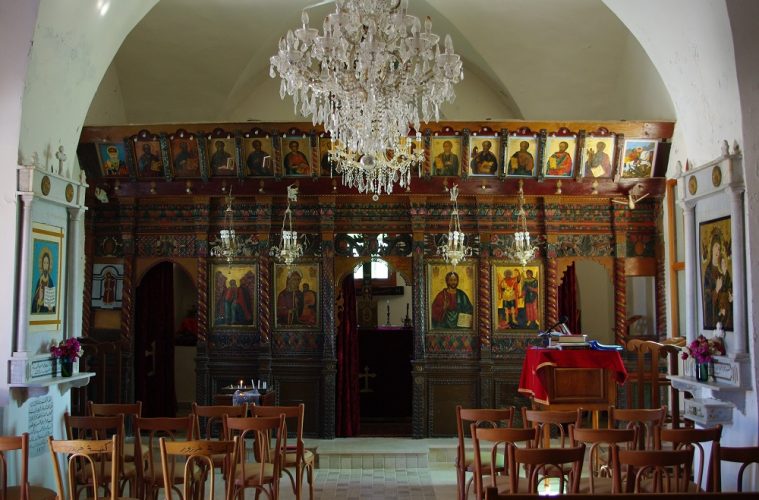- Caza: Jbail
- Distance from Beirut: 49-53 km
- Altitude: 250 – 450m
- Access: Jbail- Amchit- Hosrrayel Or Jbail- Aamchit- Jiddayel- Chikhane
Or Jbail- Amchit – ElMonsef – Chikhane – Gharzouz
There are several possible origins for the name of this village. According to one, it originated from a Semitic word meaning “divided.” Another states that it is derived from the word gharz, the plural of which is ghourouz, or “travelers.” Another possible derivation comes from the phrase “gharaza gharzan,” which means “to obey after disobedience.” A fourth explanation says it stems from the word al ghariz, meaning “the camel that gives little milk.”
This village is one of the seven Orthodox villages of the area (Qornet el Roum: El Monsef, Al Rihaneh, Jeddayel, Bakhaaz, Al Barbara, Gharzouz, Hosrayel). It is an old traditional village with a small square functioning as a center for reunions and shops. Amin Al Rihani described the beauty of the nature surrounding this town, indicating the fields of Asr, an old term handed down through the generations, of which the real meaning is lost. It is commonly held that in “Asr” was the palace of the daughter of one of the Phoenician kings of Jbail.
- Old gypsy stove, Old “Yatoun”:
Many of them can be observed from the main road
- Al Arba’en Chahid Monastery (Greek Orthodox, Convent of the 40 Martyrs):
1600 AD. Large stones and ancient wells indicate that this old monastery might have been built on the ruins of a pagan temple. It is situated on a hill on the southeastern side of the village. The 40 Martyrs are soldiers of the early Christian era executed by Lucian in 320 AD. Around this church we can find many tombs and old wells, Roman remains, ruins and pottery. The view from here of the valley of El Helweh makes it a great place for picnics. You can reach this place on the hill either on foot or by an old road with a beautiful passage in the fields.
- Saydet El Niyah Parish Church (Our Lady of the Dormition):
It is a Greek Orthodox Church. It was built 500 years ago on the remains of an old temple. Some original sculptures and moldings from the temple can still be seen on the stone blocks of the church’s walls. On the south wall, a small oval sculpture represents an early Christian symbol; this tree of life was used later in the decoration of Islamic shrines. Built with yellow stones, the church has a wooden door, with a carving of Mother Mary over it. The iconostasis of the dormition and of St Georges’ icons has been restored.
For the key, contact Mrs. Venise Azar: (09/790 779)
- The old village bakery: this bakery is a private ownership, not open for public.
- Local cultures: Olives, figs, almonds, vegetables, tobacco
- Local products: Debs (Lebanese molasses; it’s a small factory), olive products (olives, olive oil, soap)
Saj Mirna (Manakish and sandwiches): Mrs. Mirna Saade (03/ 374 866) handcrafts, jam and pickles (Kabis)
Communauté Catholique des Béatitudes : Eglise Marie Reine de la Paix, Hostel (09/790 820 – 09/790 821) Email: bealiban@dm.net.lb
Mrs. Lody Doumit: 03/524 479 (Handicrafts – crochets, cookies, pastries)

